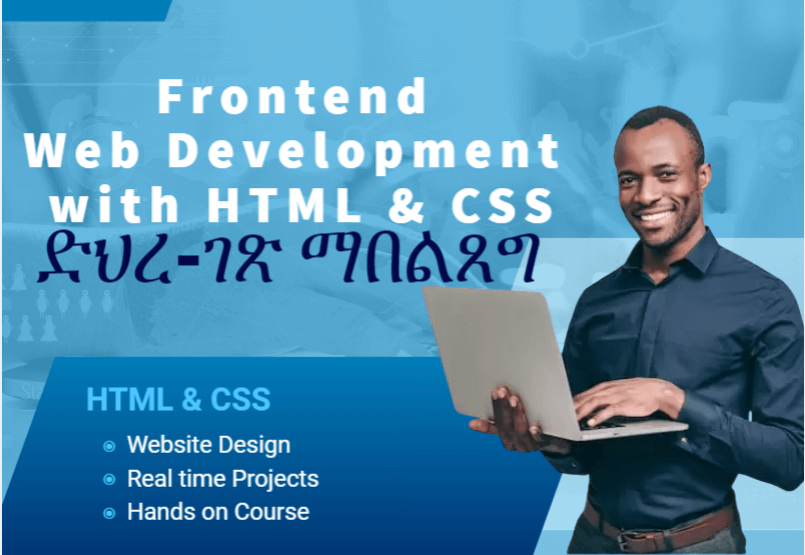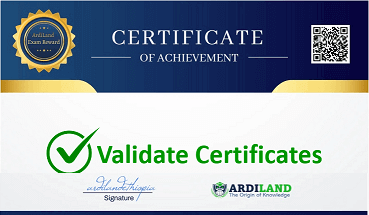Frontend Web Development with HTML and CSS
in Web DevelopmentWhat you will learn?
Understand the basics of HTML and CSS
Be able to create web pages using HTML and CSS
Know how to style web pages with colors, backgrounds, and borders
Be able to create layouts with the box model, positioning, and layout tools
Understand how to make web pages responsive using media queries, flexbox, and grid layout
Be able to add interactivity to web pages using JavaScript
Have built a portfolio of web pages that showcase their skills
About this course
In this course, you will learn the basics of HTML and CSS, as well as more advanced concepts to build beautiful, responsive, and user-friendly websites.
The course will cover the following topics:
- Introduction to HTML: Understanding the basic structure of an HTML document, creating HTML tags and attributes, and organizing content with HTML elements.
- HTML5: Learning about the new elements and features in HTML5, such as semantic markup, audio and video, and form controls.
- Introduction to CSS: Understanding how to use CSS to style HTML documents, including basic CSS syntax, selectors, and properties.
- CSS Layout: Creating responsive layouts with CSS, including working with grids, flexbox, and CSS frameworks.
- Advanced CSS: Learning advanced CSS techniques, such as animations, functions, variables, and transforms.
Requirements
A computer or laptop with an internet connection
A web browser, preferably Google Chrome
A text editor, preferably Visual Studio Code
Basic computer skills
A desire to learn frontend web development with HTML and CSS.
FAQ
Comments (0)
HTML (Hypertext Markup Language) and CSS (Cascading Style Sheets) are the foundation of every website. In this course, you will learn the basics of HTML and CSS, as well as more advanced concepts to build beautiful, responsive, and user-friendly websites.
We are going to Download and install VS Code: Go to the official website of VS Code (https://code.visualstudio.com/) and download the installer for your operating system. Follow the instructions to install it on your computer.
HTML (Hypertext Markup Language) is a markup language used to create web pages. It provides a standardized way to structure content on the web, allowing web browsers to interpret and display that content consistently. HTML uses a system of tags and attributes to define different elements of a web page, such as headings, paragraphs, links, images, and forms. Tags are enclosed in angle brackets (< >) and mark an element's beginning and end. Attributes provide additional information about an element and are added to the opening tag. In this lesson, we are going to see an overview of HTML.
HTML documents have a specific structure that consists of the following elements: These are just some of the basic elements of an HTML document. There are many more elements available for use in HTML, each with its own specific purpose and syntax.
Typography in HTML refers to the use of fonts, sizes, and styles to create visually appealing and readable textual content on a web page. Here in this lesson, we are going to discuss some common HTML tags used for typography.
In HTML, a section is a logical grouping of related content within a web page. It is denoted by the tag and can be used to help organize and structure the content of a web page. Here are some examples of how sections can be used:
Grouping of content: Sections can be used to group together related content on a web page, such as a list of articles, a group of product features, or a set of testimonials.
Navigation: Sections can be used to define the different sections of a web page and create a navigation menu that allows users to easily jump between them.
Accessibility: Sections can be used to improve the accessibility of a web page by providing structure and context to the content, which can be helpful for users who rely on screen readers or other assistive technologies.
In HTML, a link is a clickable element that directs the user to another web page or resource. It is denoted by the tag, which stands for "anchor," and can be used to create both internal and external links.
Advanced text formatting in HTML is typically achieved through the use of CSS. Here we are going to discuss some examples of advanced text formatting that can be achieved using CSS
In HTML, images can be added to a web page using the tag. Here we are going to see how to add an image.
HTML supports various multimedia elements such as audio, video, and images. Here we are going to see how to add multimedia elements to an HTML page.
HTML tables allow web developers to arrange data into rows and columns.
The HTML element represents a document section containing interactive controls for submitting information.
Here in this lesson, we are going to discuss different new elements added in HTML 5. We are also going to discuss HTML reference documents.
In this lesson, we are going to see basic commands in Git and we are going to push our code to GitHub repository.
Here, we are going to build a simple website only with HTML. This will help you use different concepts we have discussed in this course, to build a website.
CSS is used to define styles for your web pages, including the design, layout, and variations in display for different devices and screen sizes. This lesson introduces you to CSS and How to include them in HTML.
CSS selectors define the pattern to select elements to which a set of CSS rules are then applied. Here in this lesson, we are going to discuss different ways of selecting HTML elements to apply a style to them.
CSS selectors define the pattern to select elements to which a set of CSS rules are then applied. Here in this lesson, we are going to discuss different ways of selecting HTML elements to apply a style to them.
A pseudo-class is a selector that selects elements that are in a specific state. and A CSS pseudo-element is used to style specified parts of an element. For example, it can be used to: Style the first letter, or line. In this lesson, we are going to explore different pseudo-elements and classes available in CSS.
In CSS, some styles are inherited down the HTML document tree while others are not. If multiple CSS rules conflict with one another, the most important or specific selector is the one that will apply. This is called Specificity. In CSS, style sheets cascade by order of importance. If rules in different style sheets conflict and they have the same level of specificity, the rule from the most important style sheet wins. In this lesson, we are going to explain these concepts.
The CSS box model is essentially a box that wraps around every HTML element. It consists of margins, borders, padding, and the actual content. Everything in CSS is Box. in this lesson we are going to discuss Box Model in CSS.
CSS helps you to position your HTML element. You can put any HTML element in whatever location you like. You can specify whether you want the element positioned relative to its natural position on the page or absolute based on its parent element.
The float property specifies whether an element should float to the left, right, or not at all. In this lesson, we are going to discuss the use case for float property.
The Flexible Box Layout Module makes it easier to design a flexible responsive layout structure without using float or positioning.
The z-index property specifies the stack order of an element. An element with greater stack order is always in front of an element with a lower stack order.
The color property in CSS is used to set the color of HTML elements. Typically, this property is used to set the background color or the font color of an element.
There are two general kinds of units used for length and size in CSS: absolute and relative.
Media query is a CSS technique introduced in CSS3. It uses the @media rule to include a block of CSS properties only if a certain condition is true.
Typography is all about style, proportions, and spacing. Good typography is not only imperative for aesthetic appeal, but it also improves site usability when text legibility and readability concepts are applied.
Typography is all about style, proportions, and spacing. Good typography is not only imperative for aesthetic appeal, but it also improves site usability when text legibility and readability concepts are applied.
Like any other programming language, CSS has functions. They can be inserted where you’d place a value, or in some cases, accompanying another value declaration. Some CSS functions even let you nest other functions within them!
CSS animations make it possible to animate transitions from one CSS style configuration to another.
When you work on large projects you have to follow the proper method to manage your CSS. In this lesson, we are going to discuss BEM and Utility based methodologies.
The CSS Grid Layout Module offers a grid-based layout system, with rows and columns, making it easier to design web pages without having to use floats and positioning.
We are going to build a simple website to apply what we have learned so far.
In this lesson, we are going to build a Facebook interface clone. This will teach you how to approach large CSS projects.
In this lesson, we are going to build a Facebook interface clone. This will teach you how to approach large CSS projects.

Reviews (1)









